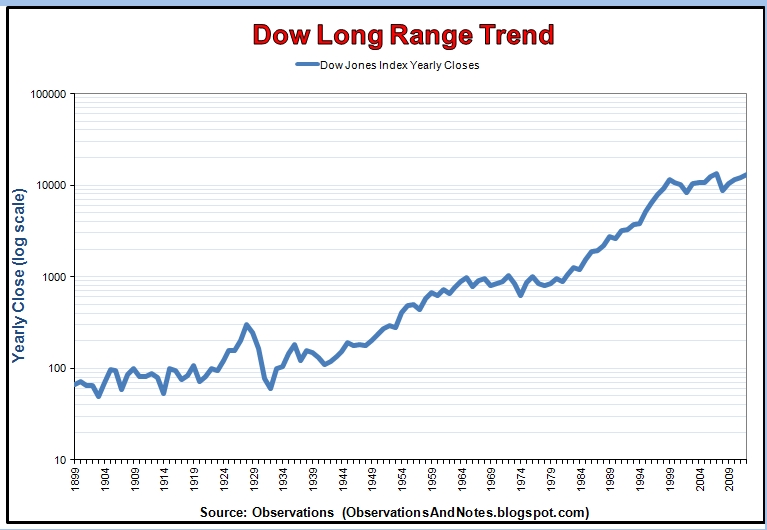In times of crisis, remember that the Dow curves upward over time.

Are We Ready For A Feasibility Study?
Feasibility studies are time-consuming and expensive. They are best utilized when an institution feels that they have done their homework, they know their major donors, they know what they need and they are relatively certain of a positive outcome from the study. A premature study not only wastes money, but risks sending a negative signal to the institution’s largest donors. The irony of feasibility studies is that the best ones only confirm what the Development Office “thinks” that it knows; new and surprising information from a feasibility study is likely to be negative.
The value of the feasibility study – for even for the most sophisticated and well-developed fundraising program – is three-fold:
A positive feasibility study confirms the best guesses and judgments of the institution about what it can raise, for what and from whom; and
A feasibility study educates the intuition’s largest donors about what will be required of them and of the institution during a major fundraising campaign; and
A substantive, data-oriented feasibility study report constructively engages the Trustee and fundraising leadership in the process of decision-making leading up to the campaign.
To ensure that your institution is ready to hire a consultant and start the feasibility study process, ask yourselves the following questions first:
Is your institution and its leadership – its Board of Trustees, President or School Head, and senior administration – positively regarded by the community you serve?
Do you have a strong case for fundraising support for the institution and is this case related to a multi-year strategic plan and does it involve a fundraising goal that is not totally unrealistic?
Do you have a good sense of your major gift community and a strong suspicion about where the lead gifts in your next fundraising campaign are likely to be?
Is your Board of Trustees supportive of this fundraising effort and are there other fundraising volunteers ready to join in, particularly at the leadership level?
Is this the right time – internally, in terms of staff readiness to undertake an intense fundraising effort and externally, in terms of competing campaigns or the economy?
If you answer yes to all questions, you have a good chance of gaining a positive feasibility study result.
Have a question? pkjackson@pkja.com
How Do I Measure The Success Of Our Fundraising Program?
Most heads of institutions and development offices are used to setting goals and measuring results against last year’s achievement. But, for many of us who get too far into the trees of our own programs, measuring our successes against the single ruler of our own history may leave us unaware of new techniques and best practices used elsewhere to maximize fundraising revenues.
Benchmarking is the continuous and systematic process of comparing and measuring our own productivity against leaders elsewhere. It helps us gain information and improve performance. Specifically, benchmarking will help you to:
Identify “best practices’ among your peers by examining leaders in various areas, such as annual giving from alumni or parents or planned giving.
Concentrate your scarce personnel and dollar resources on programs that are most likely to have the best payoffs, as demonstrated by the experience of peer institutions.
Educate your institution’s leadership about the real experiences of institutions within your peer group, as measured objectively by standardized data.
Set reasonable goals that might be aspirational but realistic and measure progress over time against these goals.
While CASE and NAIS offer programs to help institutions compare their fundraising results, I prefer the data-mining programs and database histories available through CASE now that it has acquired the Council for Aid to Education (CAE), which has been in the data-mining and data collection business for six decades. Their database includes most institutions of higher education, the boarding schools and most of the larger independent day-school program
